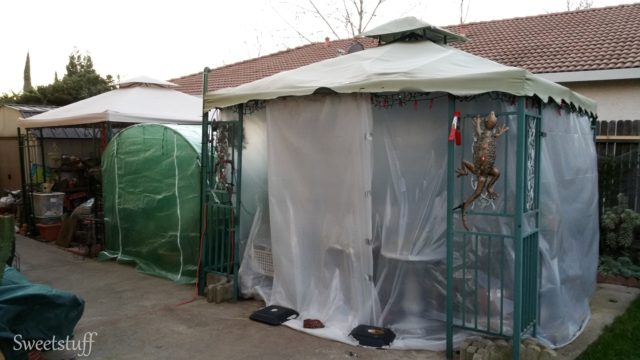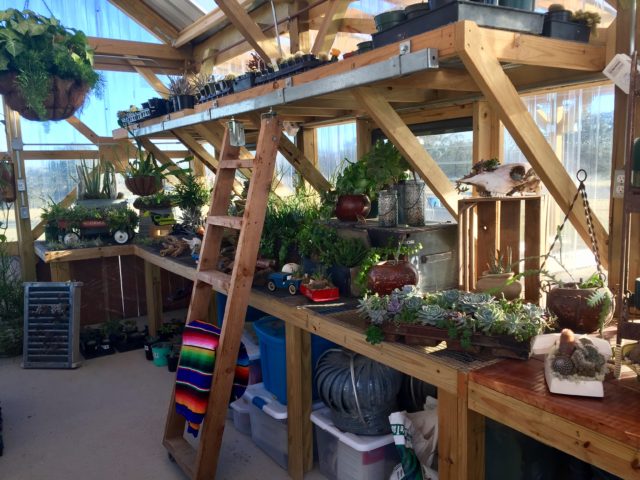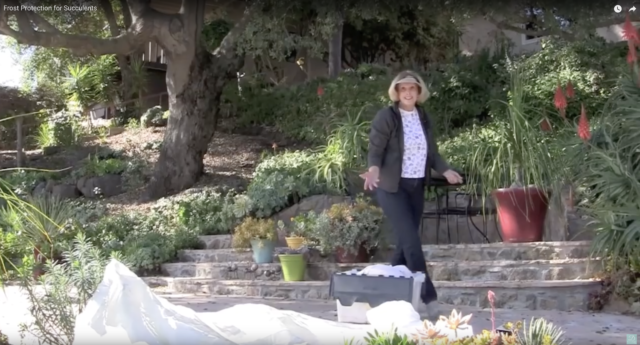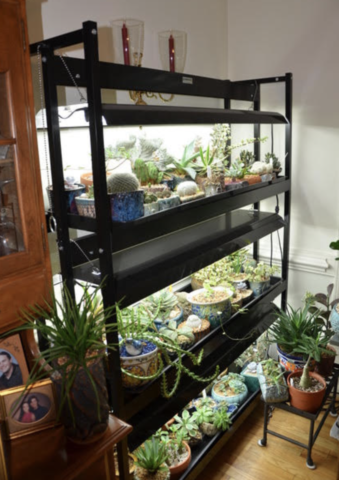Where you live makes a big difference when it comes to the well-being of your succulents in winter. Most varieties go dormant in winter and are frost-tender, meaning they can’t handle temps below 32 degrees F.
These common winter conditions can lead to damage or death for dormant (not actively growing) succulents:
— soggy soil (causes roots to rot)
— excess rainfall (engorges cells)
— frost (causes cell walls to burst)
Some succulents do have a built-in antifreeze. Those indigenous to the Americas, such as cacti and agaves, or to high elevations like many sedums and sempervivums, tend to fare better than those from Madagascar and South Africa (kalanchoes, aeoniums, aloes and crassulas). But no succulents want a lot of water when dormant, nor high humidity at any time of the year. All prefer well-draining soil, bright but not intense light, and good air circulation.
If you live, as I do, where frost is occasional and lasts only a few hours (Zone 9b), plan to cover vulnerable, in-ground succulents with frost cloth or bed sheets when there’s a frost advisory for your area. In my YouTube video, Frost Protection for Succulents, I show how I do this in my own garden. In the foothills NE of San Diego at 1,500 feet, it’s subject to cold air that settles in inland valleys. My neighbors higher-up generally get no frost at all.
If you live in Zones 8 or lower, grow tender succulents as annuals or in containers that you overwinter indoors. These members of my Facebook community graciously shared their winter set-ups:
Pat Enderly of Virginia Beach, VA: Midwinter lows average 32 F. Pat brings her plants indoors and tucks them into shelving units she purchased online. Each shelf has a waterproof tray, and each unit is lit by two T5 bulbs. “They do a wonderful job of keeping my succulents from etiolating (stretching),” Pat says, adding that the lights, on timers, stay on from 7 am to 7 pm daily. Pat moves her succulents indoors in Sept. and Oct. and takes them outside in April.
Candy Suter, Roseville, CA (near Sacramento): Midwinter nights may drop into the 20s F but seldom go lower than 25 F. Candy moves her succulents into a small walk-in greenhouse (center) or a gazebo (right), which she covers with 5mm plastic to hold in warmth. She anchors the plastic along the bottom, secures the seams with duct tape, and adds a small heater with a fan on the coldest nights.

Tenaya Capron of Buffalo, TX: Although average midwinter lows hover above freezing, occasional winter lows may drop into the single digits. Tenaya and her husband built this 24×20 free-standing greenhouse, which they outfitted with exhaust and overhead fans, an overhead heater, and double sliding barn doors on either end. I love the library ladder, don’t you?

Find more info in my book, Designing with Succulents (2nd ed.):
— Cold-Climate Succulent Gardens, pp. 111-113
— Cultivating Succulents in Challenging Climates, pp. 143-148




